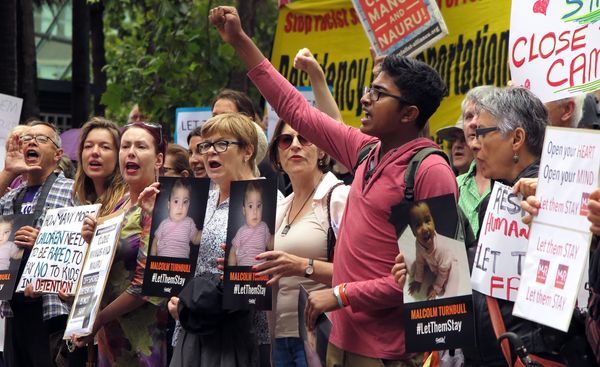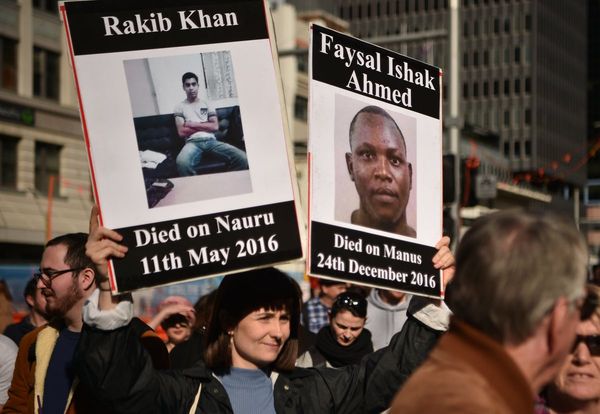Suddenly the long-delayed, long-embattled California high speed rail project has powerful friends in Washington, D.C.
President Joe Biden wants to spend $80 billion on rail projects. Transportation Secretary Pete Buttigieg told reporters last month California’s project could “potentially” get some of those funds.
In Congress, key Democrats have been sympathetic to California high speed rail, where construction in the San Joaquin Valley is now in its ninth year.
All that is a huge shift in Washington’s emphasis from the recent past, when President Donald Trump opposed the project. In 2019, the Federal Railroad Administration canceled a $929 million rail improvement grant that had been part of funding given to the state nearly a decade earlier.
Trump also threatened to force California to return about $2.5 billion in grants from President Barack Obama’s 2009 economic stimulus plan. He called the project a “green disaster.”
That’s all now history.
Biden is “a huge rail supporter. The guy’s got rail in his blood. Here’s a guy who understands rail and what it means,” said Andy Kunz, president and chief executive officer of the U.S. High Speed Rail Association. As a U.S. senator from 1973 to 2009, Biden commuted daily from Washington to his home in Wilmington, Delaware.
HIGH SPEED RAIL HURDLES
California’s bid for more funding still faces significant hurdles in Washington. The Biden proposal is part of his $2.3 trillion infrastructure plan, a package that remains highly unpopular with Republicans.
Negotiations on a compromise plan appear to be near collapse. Part of the reason for the impasse is the cost. Part involves the details. The schisms over rail became clear earlier this month at a House hearing on high speed rail.
John Porcari, an Obama administration deputy transportation secretary, was effusive in his testimony on behalf of the project.
“It is an extraordinary statement of state priorities that the California High Speed Rail Authority’s 2030 business plan anticipates 85% of its funding from state sources, and only 15% federal funding (from one-time sources) for this project of national and regional significance,” he said.
Most Democrats agreed.
“We have led the world in innovation from breaking the sound barrier to winning the space race. There is nothing stopping us from applying that same perseverance to high-speed rail,” said Rep. Donald Payne Jr., D-New Jersey, chairman of the House rail subcommittee.
Some whose districts are seeing the project built now, or in the future, are wary. House Minority Leader Kevin McCarthy, R-Calif., calls the project “the state’s high speed rail boondoggle.”
When the rail authority said it was routing the line through Wasco, Rep. David Valadao, R-Calif., protested. “The construction of the rail has disrupted businesses and homes, worsened air quality, and the abandoned Wasco Farm Labor Housing complex has posed serious health and safety risks,” he said.
It remains uncertain what portion could come to California from whatever federal infrastructure bill is ultimately hammered out between the Biden administration and Congress. The Federal Railroad Administration did not respond to a request for comment.
Earlier this year, the state rail agency acknowledged the challenge.
“It’s not just our project in California, but a growing push for green, electrified rail across the country,” said Melissa Figueroa, a spokesperson for the high speed rail authority.
Figueroa welcomed remarks by Buttigieg about the prospect of more federal assistance. “We’re pleased with ‘potentially’ at this point,” she said
CALIFORNIA’S RAIL PLAN
Gov. Gavin Newsom gave the plan a boost in his revised May budget, allowing the project to spend $4.2 billion in bond funds, part of a plan approved by voters in 2008.
The infusion of bond money, along with future “cap and trade” money paid by companies buying pollution credits from California’s greenhouse gas-reduction program, will allow the completion of 119 miles of civil work in the Central Valley.
That will involve work on structures, embankments, viaducts, trenches, utility reroutes and runs.
The existing construction contracts span an area of the rail route from north of Madera to just north of Shafter in Kern County, northwest of Bakersfield. The Newsom budget would allow the project to contract for work on extensions north to Merced and south to Bakersfield, bringing the total construction effort up to 171 miles.
One of the lingering headaches confronting the state rail agency is getting its hands on the property it needs for the rail route — more than 2,300 pieces of land just for the three existing construction contracts. Contractors cannot build on property that the California High-Speed Rail Authority doesn’t own.
Nine years into construction, the rail authority has obtained about 1,850 parcels, but remains about 440 shy of what it needs for the Madera-to-Shafter route. “We expect to have all in hand by the end of 2023,” authority CEO Brian Kelly reported to the agency’s board last week.
Where the agency does have property, work is forging ahead.
“We are approaching an important milestone: 100% design of all the construction packages underway in the Central Valley,” Kelly said. “On the 119 (miles), we’re starting to see the end of this, rather than being stuck in the beginning.”
Each of the three construction contracts was issued as “design-build” projects, in which the contractor does most of the design work as well as the construction.
That’s different than many other public infrastructure projects in which the state draws up the specifications and design before putting it out for construction bids, when a contractor is hired to build what’s already designed.
The construction work includes 62 grade separations – either overpasses or underpasses to eliminate at-grade road crossings of the high-speed train tracks – as well as three major viaducts, a long crossing of the San Joaquin River north of Fresno, and two trenches.
Under existing grant agreements with the Federal Railroad Administration, the work needs to be completed by the end of 2022.
Even when the first 119 miles is finished, at a current estimated cost of about $13.8 billion – not counting tracks and systems – California will still only have a stand-alone chunk of a rail route in the central and southern San Joaquin Valley.
That’s far from what was hailed as a 520-mile line connecting San Francisco with Los Angeles and Anaheim with electric-powered trains hauling passengers at speeds up to 220 mph.
The costs to complete an operational system with trains running between Merced and Bakersfield are now forecast at $21.3 billion to $22.8 billion.
An eventual extension west and north to San Jose and San Francisco, to complete what is often called the Valley-to-Valley system (San Joaquin Valley to Silicon Valley) is estimated to cost somewhere between $13.9 billion to $22.1 billion, a span that accounts for the uncertain expense of tunneling through the Pacheco Pass between Los Banos and Gilroy.
And getting from Bakersfield to Los Angeles and Anaheim, by way of Palmdale in the Mojave Desert, adds anywhere from $28.9 billion to $48.2 billion to the tab for burrowing through the San Gabriel Mountains and navigating densely urbanized areas in the San Fernando Valley and Los Angeles.
Achieving the entire Phase 1 system envisioned in Proposition 1A from San Francisco to Los Angeles-Anaheim, then, comes with a cost currently estimated at between $69 billion and $99.9 billion.
______







